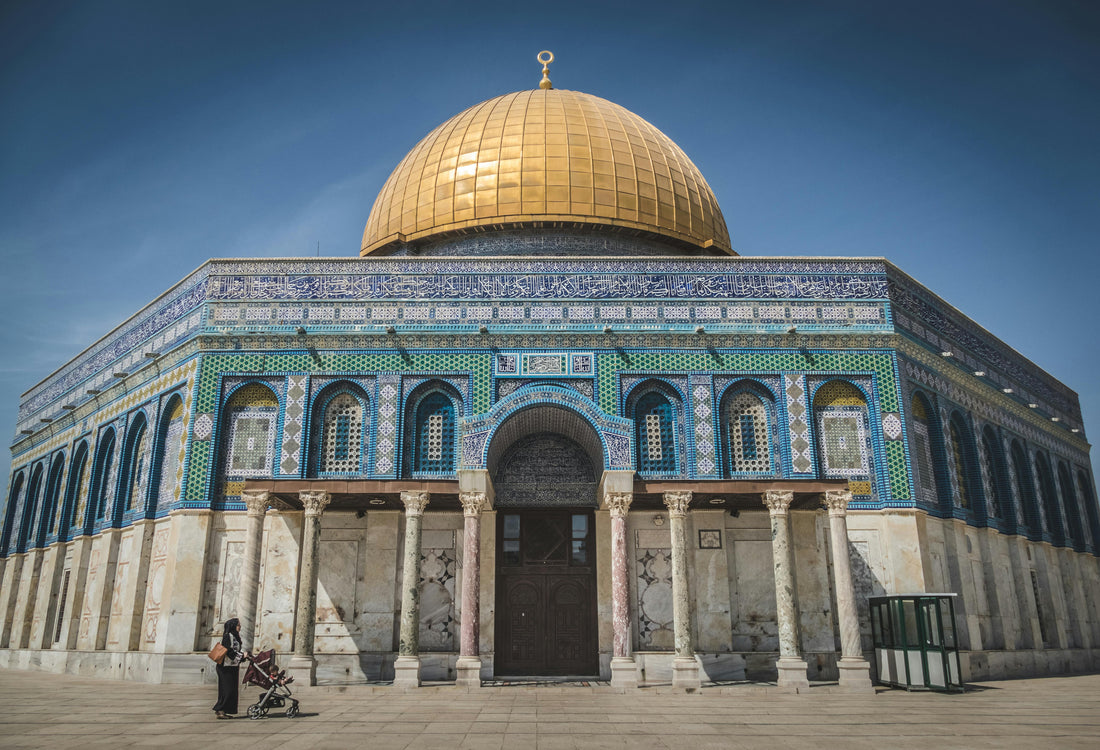
Jerusalem: The Timeless Heart of Palestine
Share
A City of History, Culture, and Legacy
Jerusalem (القدس) is one of the oldest continuously inhabited cities in the world, with a history spanning over 5,000 years. Positioned at the crossroads of civilizations, it has been a center of trade, religion, and culture for millennia. From its ancient stone streets to its historic markets, Jerusalem tells a story of endurance and heritage that few cities can match.
Today, the city has a population of approximately 970,000 people, making it one of the most significant urban centers in the region. Despite its deep historical roots, Jerusalem remains a vibrant and evolving city, where the past and present coexist.
Origins and Ancient History
Archaeological evidence suggests that Jerusalem was first settled as early as 3000 BCE, making it one of the oldest known cities. The city has been a focal point of civilization for centuries, with various dynasties contributing to its architectural and cultural evolution. Many of its structures, from underground tunnels to massive stone walls, date back thousands of years.
One of the most fascinating discoveries is the Warren’s Shaft, an ancient underground water system that provided the city with fresh water as early as 1800 BCE. The system is a testament to early engineering and the city’s strategic importance in ancient times.
Jerusalem’s Iconic Landmarks
Jerusalem is home to some of the most renowned historical landmarks in the world:
• Al-Aqsa Mosque & Dome of the Rock – One of the most recognizable sites in the city, the Dome of the Rock was built in 691 CE and is famous for its stunning gold dome and intricate mosaic work.

• The Old City Walls – The walls surrounding Jerusalem were largely rebuilt in the 16th century by Sultan Suleiman the Magnificent, and today, they stand as one of the most iconic features of the city.

• The Marketplaces (Souks) – The bustling souks of the Old City have been active for centuries, offering everything from handmade olive wood carvings to handwoven Palestinian embroidery.

A Cultural and Economic Hub
Beyond its historical and religious significance, Jerusalem has long been a center for artisans, merchants, and craftsmen. The city is famous for its production of:
• Traditional Palestinian embroidery (Tatreez) – Generations of artisans have passed down this craft, creating stunning patterns that symbolize different regions and histories.

• Stone masonry – Many of Jerusalem’s structures are built from local limestone, known as “Jerusalem stone,” which gives the city its characteristic golden glow at sunset.

Lesser-Known Facts About Jerusalem
• The city has over 220 historical monuments, making it one of the most architecturally dense heritage sites in the world.
• The Old City was once home to one of the first postal systems—letters from Jerusalem were sent across the ancient world through organized couriers. Learn more at Heritage Daily's article: Clay seal stamp from First Temple period found in Jerusalem
A rare clay seal stamp dating back to the First Temple Period (c. 7th century BCE) was discovered in Jerusalem, offering a glimpse into the city’s ancient administrative and trade practices. This artifact, bearing intricate engravings, highlights Jerusalem’s long history as a center of governance, craftsmanship, and cultural exchange.
• The city was once surrounded by vast olive groves, many of which date back over 1,000 years. Some of these trees are still standing today.

A Living Testament to History
Jerusalem is more than just a city—it is a living archive of history, culture, and craftsmanship. Every street, every stone, and every marketplace carries echoes of the past, preserved through generations. Whether through its legendary souks, its centuries-old olive trees, or its towering architectural marvels, Jerusalem remains a city unlike any other.
FALASTIN is dedicated to honoring the heritage of Palestinian cities like Jerusalem, celebrating their history, culture, and traditions through every piece we create.
#CitiesOfPalestine #FALASTIN #WearHeritagePreserveHistory #Palestine #Jerusalem


